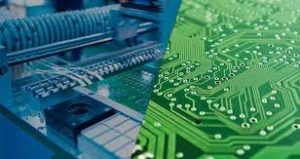PCB routing is a very important stage of the design of printed circuit boards, at which are the paths of electrical signals that goes between the various components located on the board, located. This is the foundation of PCB design, which ultimately determines how well a PCB will start to work in the final implementation. Performance (to meet specifications) but with fewer signal loss issues, interference problems, and trouble with manufacturability;RACTICHIGH'=>['Higher-quality (to meet specifications) but with fewer signal loss issues, interference problems, and trouble with manufacturability; Details and Significance of PCB Routing Explained
Fundamentals of PCB Routing
Trace Defining : PCB traces are those physical pathways on a PCB that connects various devices like resistors, capacitors or integrated circuits. These lines can be width as per the carrying current the thermal the characteristics of the circuit. So, for instance, a trace carrying 1 ampere might be 10 mils (0.010 inches) wide, whereas one carrying more than 3 amperes-and not dissipative too much power in the process-might need to be 24 mils wide.
Signal Integrity: When signals pass through the PCB, it must maintain the lot of signal transferring through it. Crosstalk and electromagnetic interference (EMI) can especially be a problem with high-speed signals. These problems can be largely mitigated by strategic placement and routing of traces. For example, keeping a minimum trace-to-trace gap at least 3x the trace width allows for reduced crosstalk between parallel signal lines.
Routing has a role in thermal management: The way you route a PCB can also help in managing the thermals on the PCB. Traces should be laid out to distribute heat and avoid creating local hotspots that can cause components to fail. For example, you may use thicker traces for traces carrying a high current and you should avoid placing thermally sensitive components in areas of thermal concentration.

Advanced Tactic and Strategy
Impedance Control: In high frequency circuits, the impedance of every trace is important to ensure that signal reflection and attenuation do not occur. This is usually done by carefully controlling the trace width and the dielectric material between the trace and the reference plane. A 50-ohm impedance for instance may necessary certain trace width given the dielectric constant of the substrate material.
Differential Pair Routing - For differential signals, like USB or Ethernet, we need to route pairs of traces in parallel with precise spacing to maintain equal and opposite currents. It makes the signal integrity less vulnerable to external noise and EMI.
Vias: Vias are employed to create connections between layers of a PCB. Anything can be good in moderation as long as it's necessary, in this case, the problem is solved with plenty of vias' thus the PCB layout getting more complex and more expensive. But they can also be signal degradation points if not planned properly. Hence, good routing ensures to lower the utilization of vias whereas maintaining the electrical performance and integrity of the PCB.
Why PCB Routing Is Crucial
Space-Saving: Efficient routing allows for more efficient usage of space on a PCB, enabling smaller designs It is extremely important in electronic devices in which the available area is very small.
Improves Performance: Rigorous routing impacts the PCB performance directly This helps in delivering electrical signals with least losses and minimum interference, which is a key factor in ensuring the performance and reliability of the electronic item.
Reduction in Manufacturing Costs: Proper routing can streamline the manufacturing process, and it lessens the chances of errors during fabrication and assembly. This can result in reduced costs for production and increased yields.
PCB routing is not just the act of connecting components, it is an optimization process to the entire electronic system to functioning, reliability and efficiency. You can also check out pcb routing tips for beginners for more insights and practical tips on how to route your pcb effectively usedencedl. Whether you are an experienced engineer or new to PCB design, understanding routing will be very helpful for making successful electronic products.